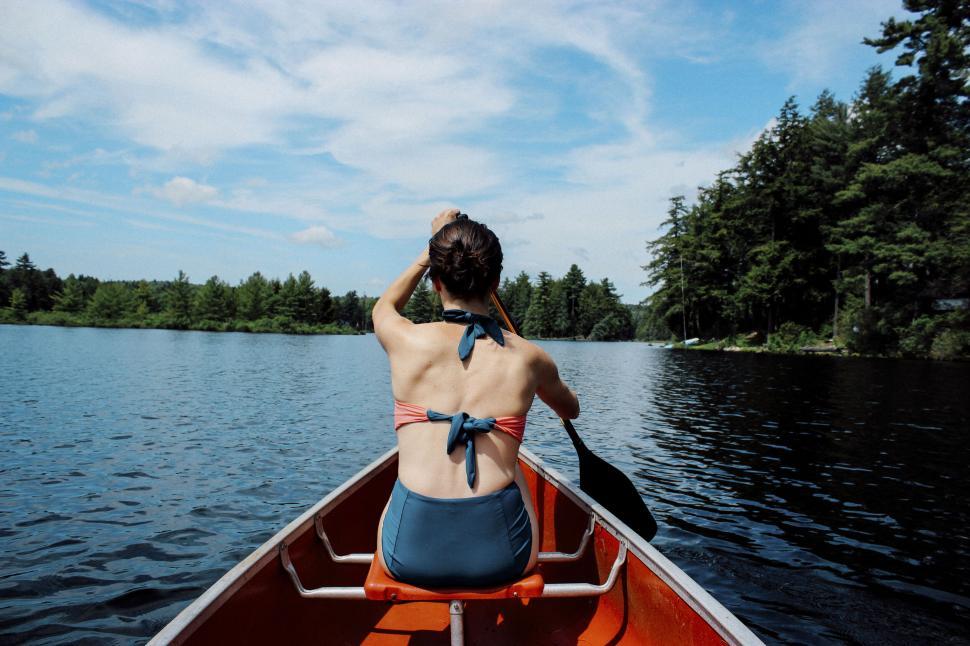Canoeing is a wonderful way to immerse yourself in nature, offering a mix of tranquility and adventure. However, a safe and enjoyable canoeing experience requires adhering to essential safety practices. This guide explores key safety measures every paddler should follow to ensure a secure journey on the water.
- Personal Safety Equipment
The foundation of canoeing safety is the use of Personal Flotation Devices (PFDs) or life jackets. Regardless of your swimming ability, wearing a well-fitted PFD is crucial. These devices not only provide necessary buoyancy but also play a vital role in emergencies, safeguarding both beginners and seasoned canoeists.
- Basic Canoeing Skills
Before setting out, ensure you have fundamental paddling and steering skills. Beginners should consider enrolling in a canoeing course. Such courses offer practical training and build confidence. Practicing in calm waters helps develop essential skills before tackling more challenging conditions.
- Weather Awareness
Always check weather conditions before heading out. Adverse weather, such as strong winds or thunderstorms, can significantly increase risks. Plan your trips for days with favorable weather and stay updated on forecasts to ensure a safer and more enjoyable experience.
- Communication and Planning
Effective communication and planning are critical for safety. Inform a trusted person about your canoeing plans, including your route and expected return time. This ensures that help can be summoned quickly if needed, enhancing your safety on the water.
- Waterway Selection
Choose appropriate waterways based on your skill level. Beginners should start with calm, sheltered waters and gradually move to more challenging ones as they gain experience. Experienced paddlers should assess their skills relative to the demands of their chosen routes.
- Canoe Balance and Weight Distribution
Proper balance and weight distribution are key to stability. Evenly distribute weight in the canoe and adhere to the manufacturer’s recommended weight limits. This practice helps prevent capsizing and ensures a smoother paddling experience.
- Understanding Water Conditions
Understanding water conditions, including currents, tides, and waves, is crucial for safe canoeing. Adjust your route and paddling techniques based on these conditions to enhance control and safety.

- Avoiding Overloading
Never overload your canoe. Exceeding the weight capacity can compromise stability and increase the risk of capsizing. Prioritize safety over convenience by adhering to weight limits.
- Hydration and Proper Attire
Stay hydrated to maintain energy and focus during your trip. Carry sufficient water, especially on longer journeys. Dress appropriately for the weather, layering for temperature changes, to ensure comfort and safety.
- Sun Protection
Protect yourself from harmful UV rays when paddling under the sun. Use sunscreen, wear UV-protective sunglasses, and a hat to shield yourself from sunburn and long-term skin damage.
- Wildlife Awareness
Respect wildlife and their habitats. Maintain a safe distance from animals and avoid disturbing them. This not only ensures a safer experience but also promotes a sustainable interaction with nature.
- Essential Safety Gear
Always carry essential safety gear, including a first aid kit, a whistle, a map, a compass, and a bilge pump. These tools are crucial for addressing emergencies and unexpected situations on the water.
- Teamwork and Communication
If paddling with others, effective communication and teamwork are essential. Collaborate and support each other to navigate challenges and ensure the safety of the entire group.
Conclusion
Canoeing is a rewarding way to connect with nature, offering both peaceful moments and thrilling experiences. By adhering to safety practices such as using personal safety equipment, developing basic skills, planning for weather conditions, and respecting wildlife, paddlers can enjoy their adventures with greater confidence. Prioritizing these safety measures ensures that canoeing remains a secure and enjoyable activity, allowing enthusiasts to fully embrace the beauty of the waterways.
